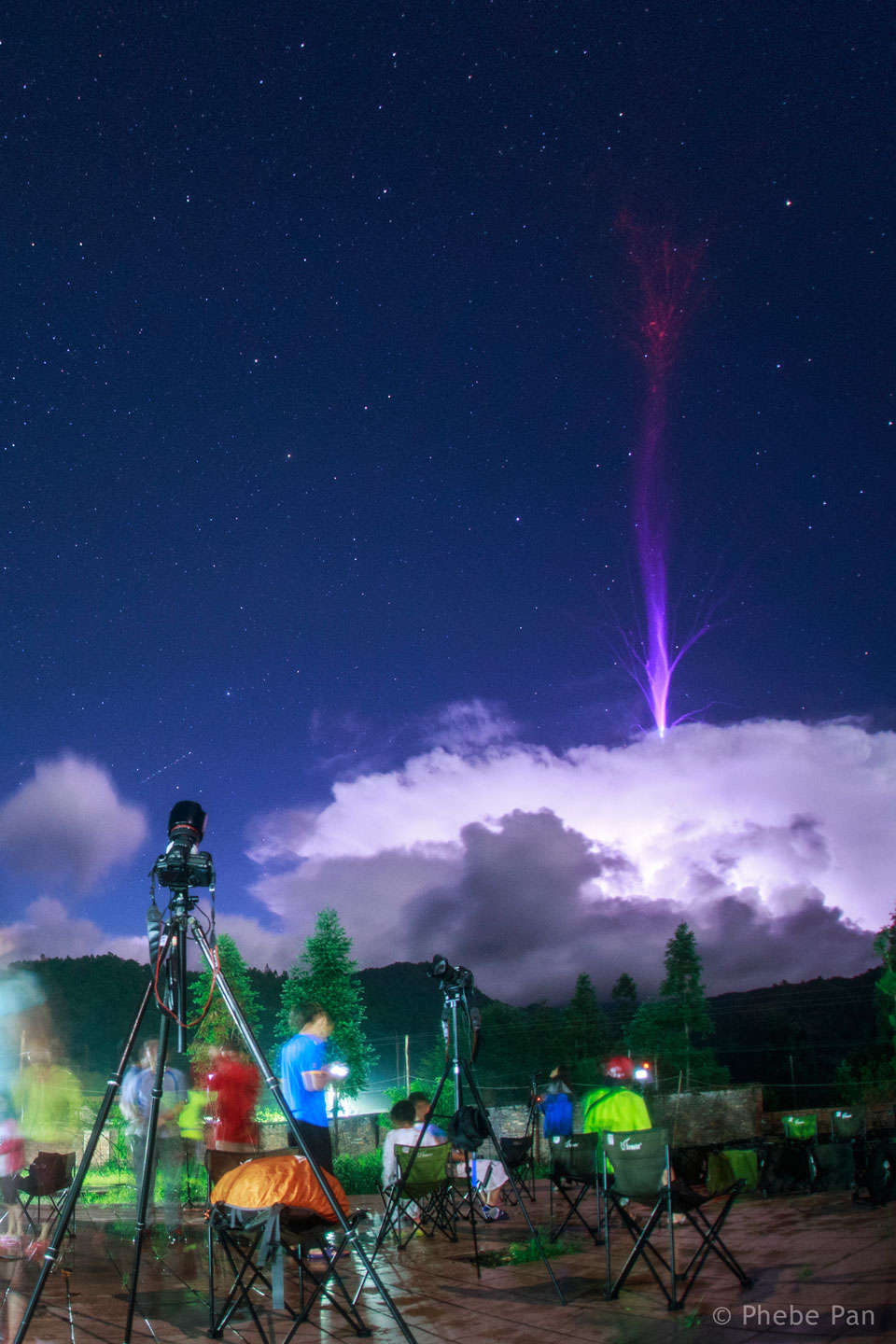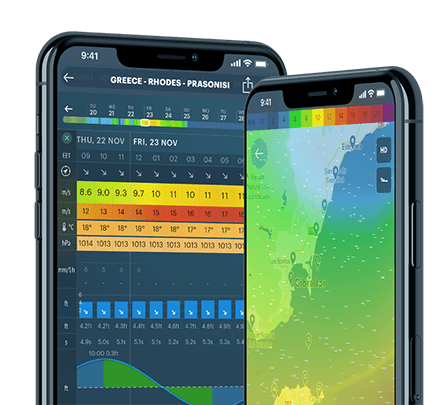
Blue Jets
Previously, we introduced you to a fascinating class of rare, infrequently-studied phenomena in the sky—they are so extraordinary that they’ve been named after mythical creatures. Today, we’ll explore another stunning phenomenon, one with a less magical but equally cosmic name. And it’s just as breathtaking!
Lightning Beyond the Clouds
In the past 35 years, scientists have identified and captured a variety of TLEs (Transient Luminous Events)—short-lived luminous phenomena occurring high above thunderclouds, between 50 and 100 kilometers above sea level.

Different types of TLEs and the altitudes at which they occur.
Unlike other TLEs, blue jets are classified as a type of lightning. Lightning occurs when a bright discharge of electrons flows between objects with differing electric charges—such as between a cloud and the ground, between two clouds, or even within the same cloud.
For lightning to form, a path of closely spaced air particles needs to develop between the charged objects. This path allows electrons to move at incredible speeds, colliding with air particles along the way. These collisions transfer so much energy to the air particles that there is enough to spare—and they release the excess energy as light.
Charged particles create electric fields around them—regions of invisible force that influence other charged particles. These electric fields are particularly strong in thunderclouds, due to constant discharges. When many neighboring particles contribute to a common electric field, it can become so powerful that its influence extends far beyond the cloud, attracting or repelling air particles in the space beyond it.
Sometimes, these fields are strong enough to form a path of air particles not only in the direction toward the ground, but also upward away from the cloud. In the area above the cloud, regions with high concentrations of charged particles are waiting. (You see where this is going, right?) Lightning that shoots upward from the cloud into space is known as a blue jet.

Blue Jet. Photo: Paul Smith
When the best view is from the ISS
Blue jets appear as cone-shaped flashes of blue light, shooting from the tops of thunderclouds into the upper atmosphere, and reaching heights of 40–50 kilometers.
Blue jets are much brighter and rarer than red sprites, and their distinct color results from the density of the atmosphere where they form. Blue jets occur in lower, denser atmospheric layers compared to sprites. Here, air particles—primarily nitrogen—collide with electrons more frequently, receiving more energy. This stronger excitation of nitrogen results in the release of more energetic blue light, rather than the red light typical of sprites.
While blue jets are cooler than the usual cloud-to-ground lightning, they don’t rely on «traditional» lightning to form. Unlike sprites, elves, or other TLEs, blue jets can occur independently of other discharges from within the thundercloud.
The first blue jets were photographed in monochrome in 1989, from the Space Shuttle as it passed over Australia.
Jets come in different shapes and colors
Blue jets aren’t the only phenomena in this category. There are two other recognized events related to them:
- Blue starters: These are smaller, weaker versions of blue jets. They also emit a bright flash, but reach a maximum of only 20 kilometers in height before fading.
- Giant jets: These powerful phenomena are far more spectacular, shooting as high as 90 kilometers—almost to the boundary of space. Giant jets are so powerful that their tops often glow red, like sprites.

A giant jet over China in 2016. Photo: NASA/Phebe Pan
Giant jets are thought to begin as intense discharges within a cloud. The upper portion of the discharge, influenced by electric fields, escapes upward into the ionosphere—a region rich with charged particles from outer space.
Capturing Blue Jets
Blue jets last only 20–40 milliseconds, so capturing them requires a high-speed camera. You’ll need to position yourself above thunderclouds—ideally in areas prone to frequent thunderstorms. So you can’t see them with your eyes alone, but now you know when they might be captured!
Text: Jason Bright, a journalist, and a traveler
Cover photo: NASA Earth Observatory images by Joshua Stevens, using data courtesy of Neubert.
Read more:
Latest News
Professional Weather App
Get a detailed online 10 day weather forecast, live worldwide wind map and local weather reports from the most accurate weather models.
Compare spot conditions, ask locals in the app chat, discover meteo lessons, and share your experience in our Windy.app Community.
Be sure with Windy.app.



